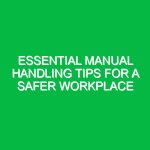Introduction
Hello team! Today, we’re here to conduct an essential Toolbox Talk centered around a critical topic: **Heat Stroke**. As we prepare for another day of work, especially in environments where temperatures can soar, it’s vital that we understand what heat stroke is, how it can affect us, and what we can do to prevent it. Heat stroke is not just a possibility; it’s a reality that can lead to serious health consequences if we do not approach it with the seriousness it deserves.
In this discussion, we will cover the key aspects of heat stroke, including its causes, symptoms, prevention strategies, and the actions to take in case of an emergency. By the end of this Toolbox Talk, you should feel equipped to recognize and respond to heat stroke effectively, ensuring a safer work Environment for everyone.
Understanding Heat Stroke
Heat stroke occurs when the body overheats, typically due to prolonged exposure to high temperatures, often in combination with dehydration. The body’s natural cooling mechanisms become overwhelmed, leading to a dangerous rise in core body temperature, which can reach 104°F (40°C) or higher.
Heat stroke can develop rapidly and requires immediate medical attention. If untreated, it can result in serious complications, including permanent disability or even death. Understanding how heat stroke develops is the first step in preventing it.
Causes and Risk Factors
Several factors can contribute to heat stroke, and it’s crucial to recognize them to minimize our risk. These factors include:
- High Temperatures: Working in hot weather increases the likelihood of heat-related illnesses.
- Dehydration: Lack of fluids diminishes the body’s ability to cool itself.
- Physical Exertion: Intense physical activity can raise body temperatures quickly.
- Age: Elderly individuals and young children are more susceptible to heat-related illnesses.
- Medical Conditions: Pre-existing conditions like heart disease, obesity, or certain medications can increase risk.
Symptoms of Heat Stroke
Recognizing the symptoms of heat stroke is crucial for timely intervention. Here are the common signs to look out for:
- High Body Temperature: A core temperature of 104°F (40°C) or higher.
- Altered Mental State: Confusion, agitation, or disorientation.
- Hot, Dry Skin: This occurs when the body’s ability to sweat has failed.
- Nausea and Vomiting: Feeling sick can be a sign of heat-related illness.
- Rapid Heartbeat: The heart may race as the body tries to cool down.
It’s vital to be vigilant and aware of these symptoms in yourself and your coworkers.
Preventing Heat Stroke
Prevention is always better than cure. Here are some actionable strategies we can implement to prevent heat stroke in our workplace:
1. Stay Hydrated
Drinking water regularly is one of the simplest and most effective ways to prevent heat stroke. Aim for at least 8-10 glasses of water a day, and increase this amount if you’re working in hot conditions.
2. Take Breaks
Incorporate regular breaks into your work schedule, especially during the hottest parts of the day. Use these breaks to rest in a cool environment and hydrate.
3. Wear Appropriate Clothing
Opt for lightweight, light-colored clothing that allows your skin to breathe. Avoid dark colors, which absorb heat.
4. Acclimatize
If you’re returning to work after a break, ensure you gradually acclimatize to the heat. Start with shorter shifts and gradually increase your exposure over several days.
5. Use Fans and Shade
Whenever possible, work in shaded areas and use fans to help cool yourself down.
Emergency Procedures for Heat Stroke
In the unfortunate event of a heat stroke incident, knowing how to respond is critical. Here are the steps to take:
1. Call for Help
If you suspect someone is suffering from heat stroke, call for emergency medical assistance immediately. Time is of the essence.
2. Move the Person to a Cooler Environment
Get them out of the heat and into a shaded area or an air-conditioned building.
3. Cool the Person Down
Use whatever means available to cool them down. This can include:
- Removing excess clothing.
- Applying cool, wet cloths to the skin.
- Using cool water spray or ice packs on the neck, armpits, and groin.
4. Monitor Their Condition
Keep a close eye on the person’s breathing and responsiveness. If they become unconscious, be prepared to perform CPR if necessary.
Real-Life Examples
Let’s consider a couple of hypothetical scenarios to illustrate the importance of heat stroke awareness.
Scenario 1: The Construction Site
Imagine a hot summer day on a construction site. The crew is working hard without taking adequate breaks. One worker, John, starts feeling dizzy and confused but brushes it off as fatigue. Unfortunately, he collapses from heat stroke. Had his coworkers been trained to recognize the symptoms and take proactive measures, they could have prevented this incident.
Scenario 2: The Warehouse
In a warehouse, employees are packing boxes in an unventilated area during a heatwave. Lisa, one of the workers, begins to feel nauseous and overheated. Remembering the Toolbox Talk from earlier, she steps outside, drinks water, and informs her supervisor. Thanks to her awareness, she avoids a serious health crisis.
Regulations and Standards
It’s essential to understand that our commitment to heat stroke Prevention is not just about personal Safety; it’s also about compliance with Workplace Safety regulations. The Occupational Safety and Health Administration (OSHA) provides guidelines to protect workers from heat-related illnesses.
Employers are required to:
- Provide sufficient water and rest breaks.
- Train employees on heat-related illnesses and prevention.
- Monitor weather conditions to adjust work schedules accordingly.
Adhering to these Regulations not only keeps us safe but also ensures that we meet our legal obligations as a company.
Conclusion
In closing, heat stroke is a serious health risk that can have severe consequences if not addressed promptly. By understanding the causes, symptoms, and preventive measures, we can protect ourselves and our coworkers. Remember to stay hydrated, take breaks, and be vigilant in recognizing symptoms in yourself and others.
Thank you all for your attention today and for your commitment to maintaining a safe working environment. Your awareness and proactive measures can make a significant difference in preventing heat stroke and ensuring everyone’s Safety on the job. Let’s work together to keep our workplace safe and healthy!
Now, does anyone have questions or personal experiences they’d like to share regarding heat stroke?


